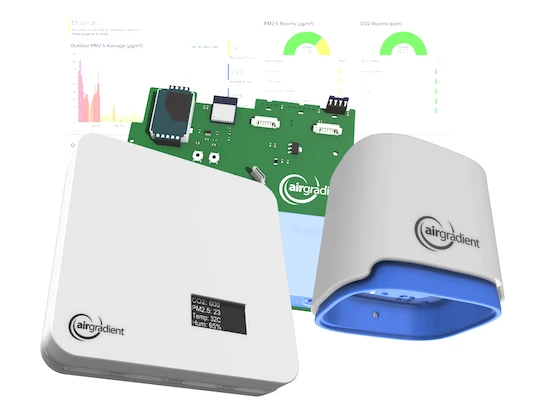AirGradient Open Source Air Quality Monitors
We design professional, accurate and long-lasting air quality monitors that are open-source and open-hardware so that you have full control on how you want to use the monitor.
Learn Moreby Achim Haug on December 5, 2024
Wildfires are intensifying, and their impact on air quality and, consequently, our health is becoming increasingly alarming. While the dangers of long-term exposure to fine particulate matter (PM2.5) are well-documented, emerging research reveals a particularly disturbing trend: PM2.5 from wildfires carries a significantly higher risk of dementia compared to PM2.5 from other sources. A recent study in JAMA Neurology provides compelling evidence of this disproportionate threat and emphasizes the urgency of protective measures.
This study, utilizing data from over 1.2 million individuals in Southern California, showed that a 1 μg/m³ increase in long-term wildfire PM2.5 exposure was associated with an 18% increased risk of dementia diagnosis. This is dramatically higher than the risk associated with the same increase in PM2.5 from other sources, which the study found to be a mere 1% increased risk. This stark difference – 18% versus 1% – underscores the unique danger posed by wildfire smoke to brain health. It’s a critical finding that demands attention and underscores the need for targeted interventions.
The study also reinforced the inequitable burden of environmental hazards, finding that younger individuals (under 75), people from racially minoritized groups, and those living in high-poverty areas experienced the strongest associations between wildfire PM2.5 and dementia.
Several factors contribute to the heightened neurotoxicity of wildfire PM2.5:
If you live in an area prone to wildfires, taking proactive steps to protect yourself is paramount:
Addressing the wildfire-dementia connection requires a comprehensive approach:
The link between wildfire smoke and dementia is a also a personal issue. I lost my grandma to this devastating disease. So this research resonates with me deeply and motivates me to see what we can do at AirGradient to better protect people.
Imagine a future where our monitors not only measure PM2.5 but also:
Reach out to me or leave a comment below if you have some thoughs how we can integrate this into our monitors and dashboard.
Curious about upcoming webinars, company updates, and the latest air quality trends? Sign up for our weekly newsletter and get the inside scoop delivered straight to your inbox.
Join our Newsletter
We design professional, accurate and long-lasting air quality monitors that are open-source and open-hardware so that you have full control on how you want to use the monitor.
Learn More